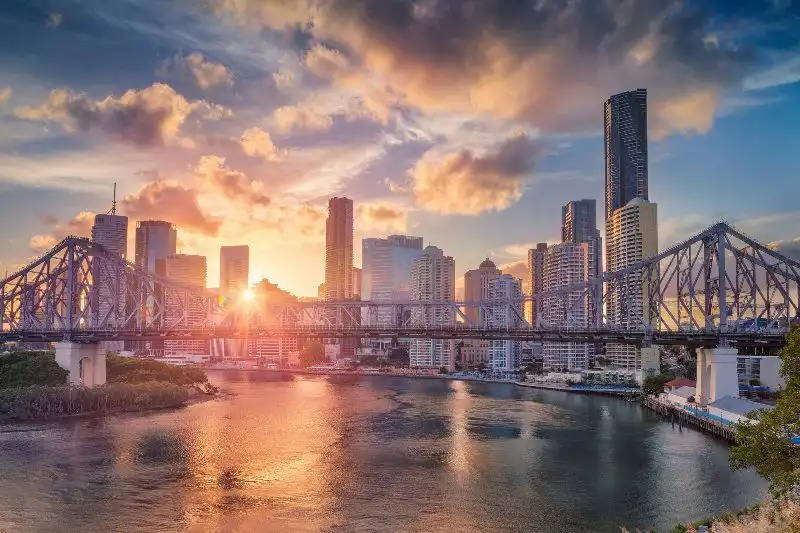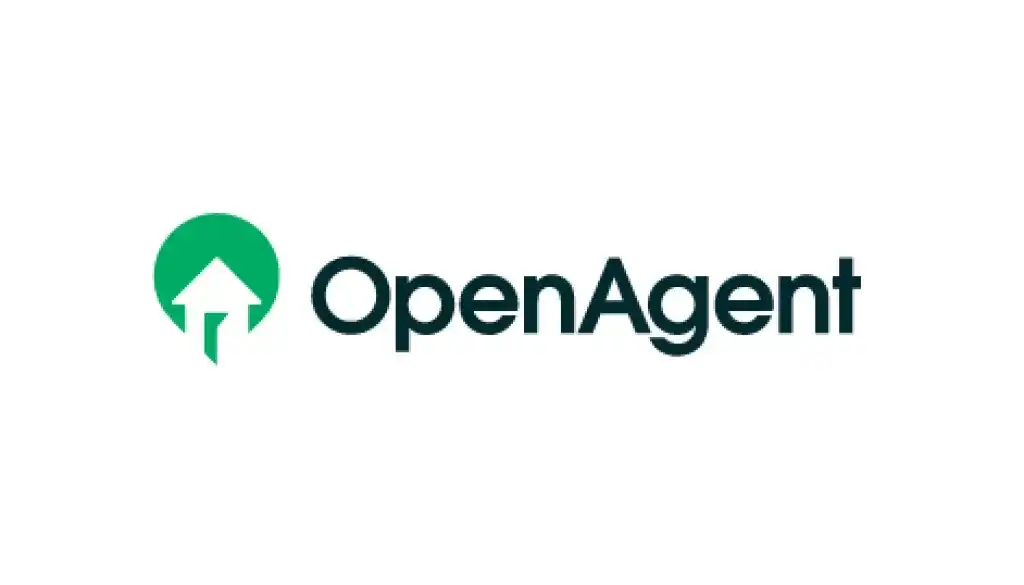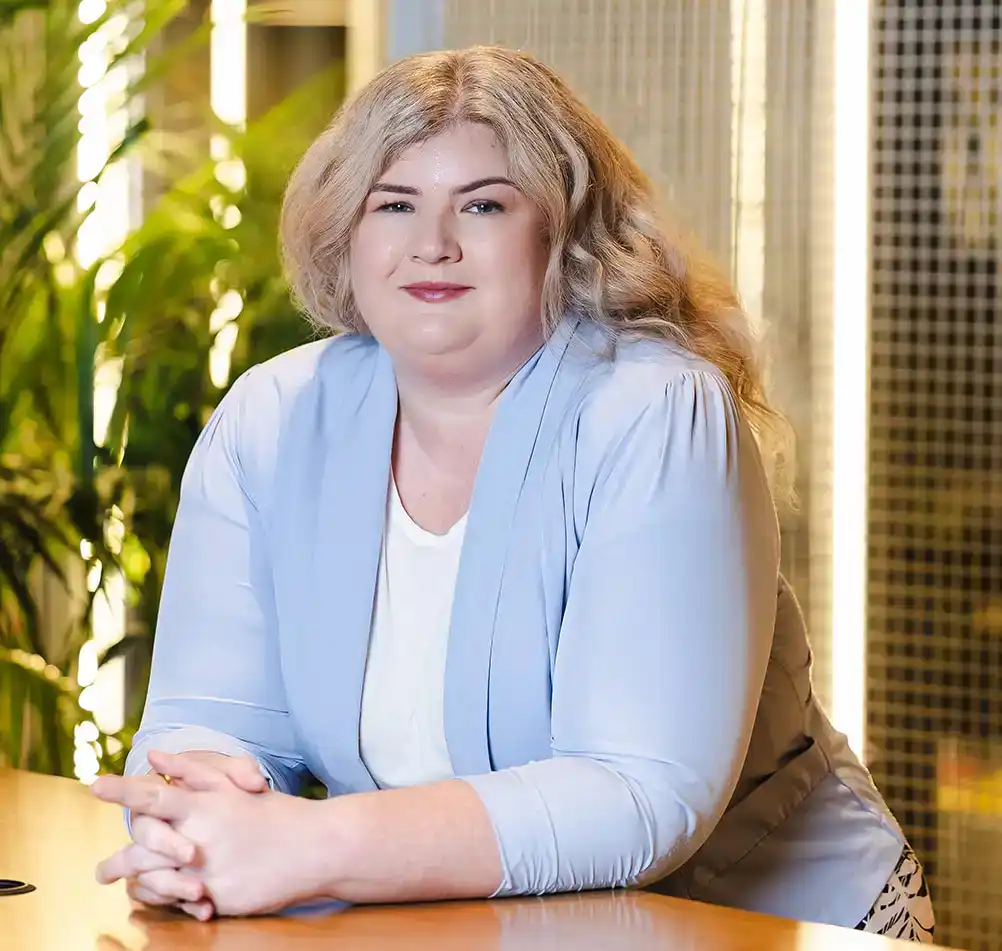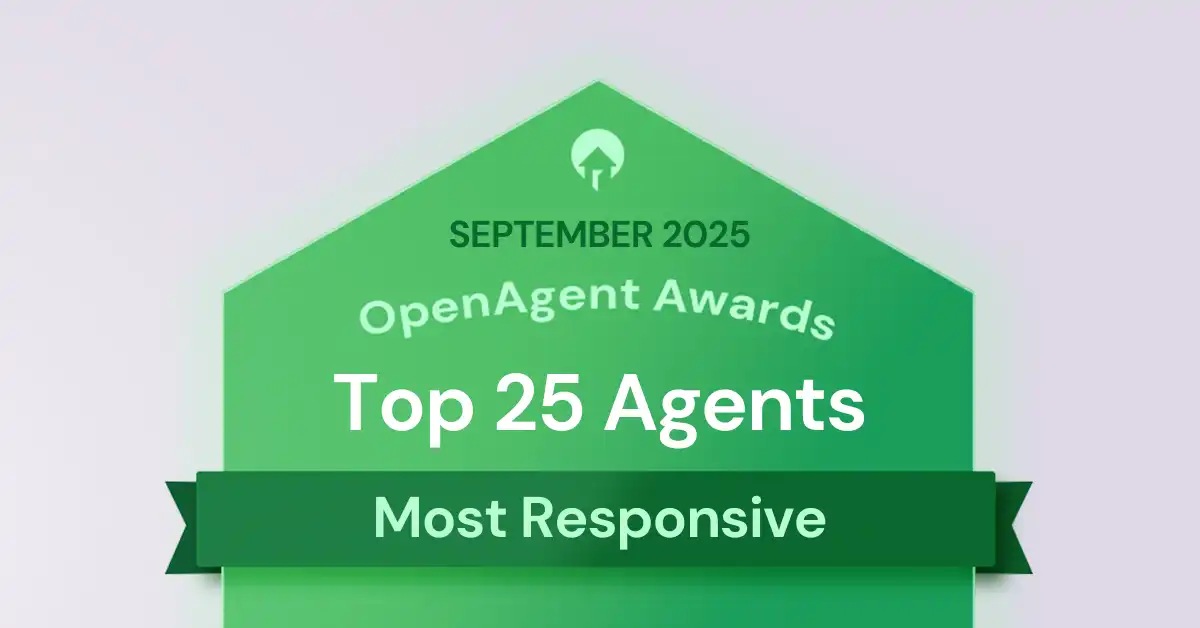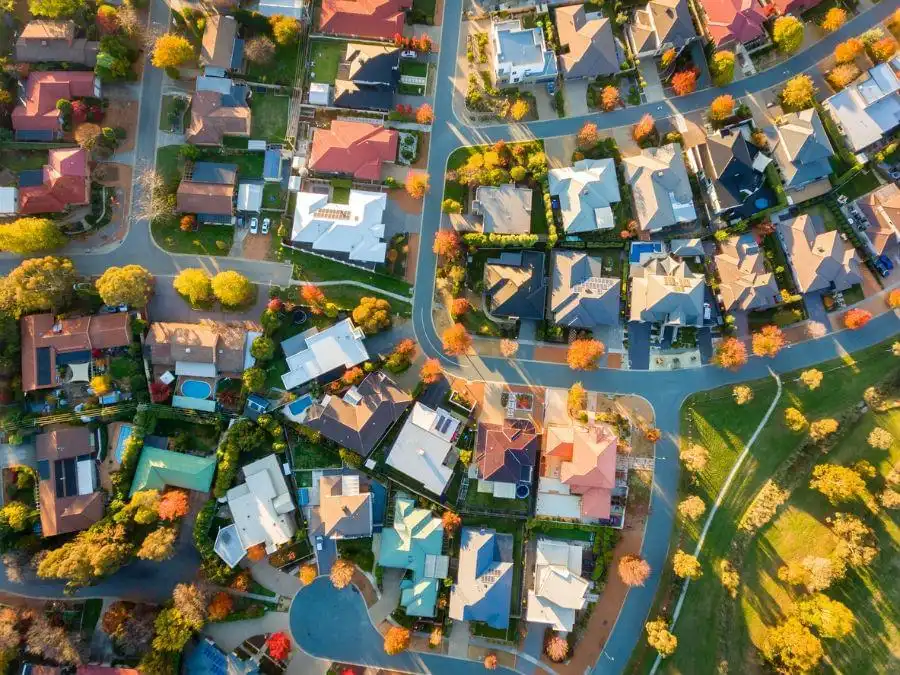Running a successful Airbnb and where you can earn the most money doing it
It might be a cheeky retirement venture only discussed with close friends, or perhaps it’s a serious plan for a career overhaul - regardless, there aren’t many of us who can say that we haven’t dreamed of starting our own little Airbnb.
There’s something very attractive to a lot of people about turning a house, a granny flat, an inner-city apartment or a little shack into a successful, experiential Airbnb. It might be something to do with the freedom of being your own boss, getting creative with interior design, or maybe it’s the chance to meet interesting people from around the world.
Whatever it is, if you feel the inclination to host on Airbnb, then you’re not alone. Since 2008, Airbnb has clocked in a massive 150 million users across 190 different countries, who together have over four million listings.
The idea is simple: if you have a spare room, why not make some money from it? If you’ve got a spare property, even better! Running an Airbnb is a great way to make a bit of cash on the side or supplement your retirement; and if things go well, it could even become your primary source of income.
So how does it all work? And what are some tips for a successful Airbnb?
While it might seem like all you need to do is create a listing on Airbnb, there’s actually a lot more to it. For example, how then do you turn your spare room or property into an Airbnb success story? And if you’re looking to buy an investment property to solely host Airbnb guests, where should you be looking?
"While it might seem like all you need to do is create a listing on Airbnb, there's actually a lot more to it. For example, how then do you turn your spare room or property into an Airbnb success story?"
Well, to answer these questions we’ve crunched the numbers on the areas where you can make the most money, as well as areas where Airbnb bookings are on the rise.
Since we know that having a successful Airbnb isn’t about simply listing it and waiting for the bookings to roll in, we’ve also sought expertise from interior design experts and a few successful Airbnb owners who have already found their fairytale ending.
How to run a successful Airbnb - decorating
Have you got a property or a spare room that you think has the potential to make some serious coin? Then what do you need to do to ensure you get a barrage of bookings and five star reviews?
We spoke to Milray Park, Australia’s hub for eDecorating. It goes without saying that they know a thing or two about changing an ordinary property into a successful Airbnb. So what factors do they think contribute to the success of a new Airbnb?
1. Communicate the listing’s unique personality
As you might have picked up, conveying a property's unique characteristics is crucial to help it stand out from the crowd. Sure, not everyone’s property is an revamped heritage-listed church, but there are still plenty of ways to give your property some personality.
According to Milray Park, it’s crucial to "Think carefully about curated artwork, lighting and accessories and how to combine these elements with statement pieces of furniture."
They also emphasise that it’s important to remove personal photos and effects from the space as these items could make your guests feel uncomfortable.
2. De-clutter and freshen your space
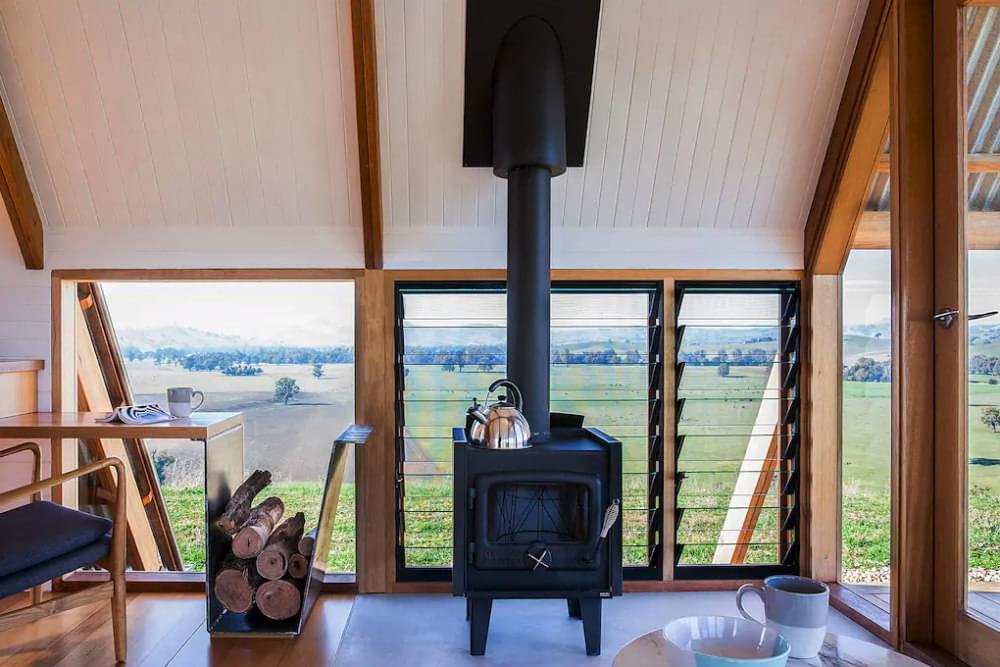
When it comes to styling your property for an Airbnb, Milray Park says to "channel your inner Marie Kondo". No-one would book a hotel room if it was cluttered with junk. When you go away on a holiday or a weekend away, you’re looking for an escape.
You want a fresh and clean space that has been thoughtfully designed, not a space overloaded with New Idea mags from 2015.
Make sure that your space is de-cluttered, that every decorative piece has its place and makes sense, and that your property is completely spick-and-span.
If your Airbnb listing is your primary place of residence that you just rent out when you’re travelling or away for the weekend, Milray Park says it’s important to ensure your personal belongings are placed in storage or even at a friend’s place for the duration of your guests' stay.
You could even have one dedicated room that is used as a storage room and that isn’t part of the listing. This room could be kept locked while you are hosting.
3. Make sure your guests feel at home
It may seem obvious, but new Airbnb hosts should always remember to regularly stock their listing with fresh amenities. Small touches can make the difference between just another Airbnb and a top-rated listing.
"Small touches can make the difference between just another Airbnb and a top-rated listing."
Milray Park makes it clear that "Your place is going to be your guests’ home away from home, so basic amenities such as fresh towels, nice soap, a kettle, some tea bags and their own city guide might make all the difference between a host and a super host!"
4. Monitor your guest's reviews and respond to their feedback
Professional Australian Airbnb management company MadeComfy recommends publicly replying to any negative reviews you receive on your listing as soon as possible, so that potential guests looking to book your property can understand the context of the complaint and how you plan to handle the problem for future reservations.
A public response also indicates your responsiveness as a host, and that you take issues that arise seriously. A reasonable, polite and well crafted response can restore trust in the eyes of future guests who might otherwise be put off by negative feedback.
Keeping a close watch on your reviews is a great way to continually improve your guest's experience, as well as property marketing. Positive feedback can inform you on the best aspects of your property, and you should review whether they are sufficiently highlighted in your listing.
For example, if your guests are praising your property as 'surprisingly spacious', perhaps your listing's photos are making the rooms appear more cramped than they actually are.
Tips for running a successful Airbnb
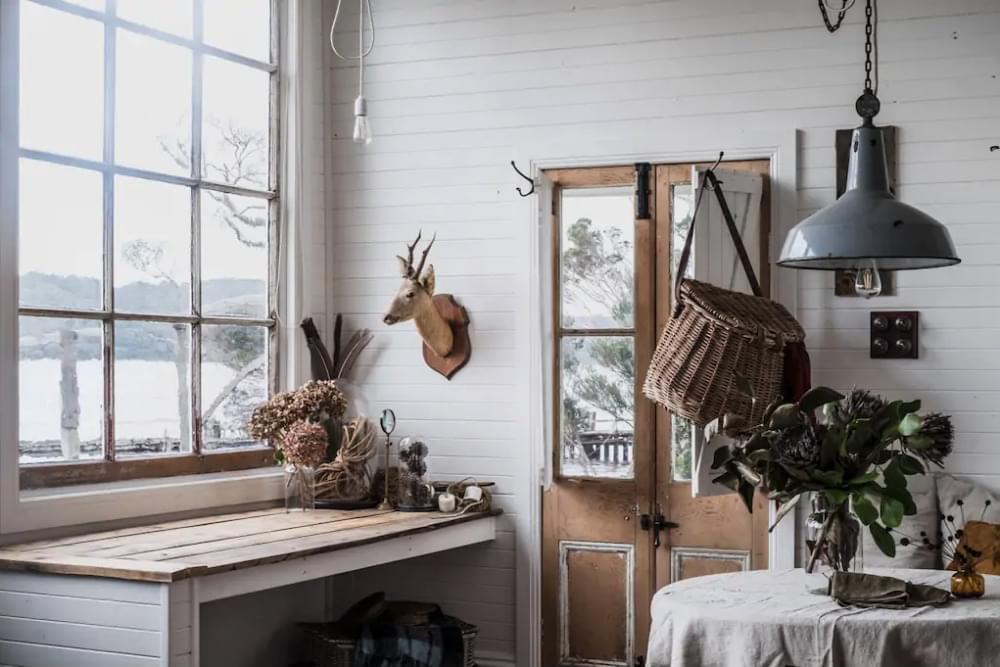
For new hosts looking at setting up an Airbnb, it's important to do some proper research. If you’re looking to purchase a property for Airbnb purposes, you should know which cities perform best and how many guests you should expect for your listing.
Whether your Airbnb listing is a new investment or you're looking to jazz up the family holiday home, a big part of your research should be put into interior design.
So what are some good resources for Airbnb hosts to draw interior inspiration from?
According to Milray Park, its best to gather a collection of images from any source you can think of online. "Before getting started on any room design, we recommend gathering together images online of rooms, colours and any particular pieces you’re drawn to!"
Getting a collection of resources together can act as your palette from which you can start to form your own design. Milray Park is a great resource to help you get started with a great design language, however, even the experts say that their "go-to resources are the good old Pinterest and Instagram."
Milray Park also suggests taking a look at other top listings to see what they are doing right. "It’s also great to check out other listings in your neighbourhood to see what you are competing against and how you could make your property stand out."
"Check out other listings in your neighbourhood to see what you are competing against and how you could make your property stand out."
How much money can you make from an Airbnb in each capital city?
Like any investment, the returns of an Airbnb will vary greatly depending on where the property is located. Capital cities also have different demands that will greatly affect the amount of guests, and average occupancy rates that you can likely expect for your new Airbnb listing.
It’s important to get savvy with the latest Airbnb data. Here’s how the figures stack up for each of Australia's capital cities according to AirDNA’s data:

1. Sydney, NSW
- 29,367 active rentals
- 19,694 active hosts
- Average daily rate: $230
- Occupancy rate: 65%
- Monthly revenue: $2,965
- Annual rental growth: 35%
- 64% of rentals are entire homes
2. Brisbane, QLD
- 6,912 active rentals
- 4,367 active hosts
- Average daily rate: $150
- Occupancy rate: 67%
- Monthly revenue: $2,083
- Annual rental growth: 45%
- 59% of rentals are entire homes
3. Melbourne, VIC
- 22,361 active rentals
- 12,932 active hosts
- Average daily rate: $193
- Occupancy rate: 67%
- Monthly revenue: $2,939
- Annual rental growth: 38%
- 70% of rentals are entire homes
4. Adelaide, SA
- 3,550 active rentals
- 2,471 active hosts
- Average daily rate: $188
- Occupancy rate: 67%
- Monthly revenue: $2,886
- Annual rental growth: 48%
- 66% of rentals are entire homes
5. Hobart, TAS
- 1,211 active rentals
- 830 active hosts
- Average daily rate: $208
- Occupancy rate: 77%
- Monthly revenue: $3,740
- Annual rental growth: 53%
- 77% of rentals are entire homes
6. Perth, WA
- 5,490 active rentals
- 3,553 active hosts
- Average daily rate: $140
- Occupancy rate: 75%
- Monthly revenue: $2,256
- Annual rental growth: 28%
- 64% of rentals are entire homes
7. Darwin, NT
- 415 active rentals
- 305 active hosts
- Average daily rate: $151
- Occupancy rate: 60%
- Monthly revenue: $1,596
- Annual rental growth: 44%
- 62% of rentals are entire homes
8. Canberra, ACT
- 1,108 active rentals
- 778 active hosts
- Average daily rate: $157
- Occupancy rate: 72%
- Monthly revenue: $2,614
- Annual rental growth: 47%
- 58% of rentals are entire homes
Top 10 trending Airbnb destinations in Australia for 2019
If you’ve been thinking of buying an investment property to turn into your dream Airbnb, you should do some solid research to maximise your chances of success. Different towns and cities around the country have varying Airbnb statistics, so be sure to get to know how your listing should perform.
According to AirDNA’s data, these are the top 10 Australian cities tipped to see a good 2019 for new Airbnb investors:

1. Wagga Wagga, NSW (289% increase in bookings year-on-year)
- 161 active rentals
- 115 active hosts
- Average daily rate: $153
- Occupancy rate: 64%
- Monthly revenue: $2,306
- Annual rental growth: 73%
- 70% of rentals are entire homes
2. Blackheath, NSW (281%)
- 205 active rentals
- 114 active hosts
- Average daily rate: $256
- Occupancy rate: 41%
- Monthly revenue: $3,055
- Annual rental growth: 69%
- 86% of rentals are entire homes
3. Toowoomba, QLD (229%)
- 300 active rentals
- 221 active hosts
- Average daily rate: $140
- Occupancy rate: 58%
- Monthly revenue: $1,978
- Annual rental growth: 54%
- 60% of rentals are entire homes
4. Tamborine Mountain, QLD (205%)
- 131 active rentals
- 100 active hosts
- Average daily rate: $223
- Occupancy rate: 50%
- Monthly revenue: $2,917
- Annual rental growth: 44%
- 66% of rentals are entire homes
5. Mount Gambier, SA (202%)
- 90 active rentals
- 56 active hosts
- Average daily rate: $195
- Occupancy rate: 51%
- Monthly revenue: $2,265
- Annual rental growth: 82%
- 81% of rentals are entire homes
6. Corowa, NSW (175%)
- 119 active rentals
- 55 active hosts
- Average daily rate: $285
- Occupancy rate: 45%
- Monthly revenue: $2,550
- Annual rental growth: 58%
- 89% of rentals are entire homes
7. Bridport, TAS (173%)
- 57 active rentals
- 34 active hosts
- Average daily rate: $207
- Occupancy rate: 67%
- Monthly revenue: $3,284
- Annual rental growth: 118%
- 98% of rentals are entire homes
8. Jindabyne, NSW (166%)
- 773 active rentals
- 286 active hosts
- Average daily rate: $346
- Occupancy rate: 48%
- Monthly revenue: $3,716
- Annual rental growth: 72%
- 91% of rentals are entire homes
9. Strahan, TAS (163%)
- 68 active rentals
- 30 active hosts
- Average daily rate: $185
- Occupancy rate: 59%
- Monthly revenue: $3,172
- Annual rental growth: 106%
- 89% of rentals are entire homes
10. Mudgee, NSW (158%)
- 130 active rentals
- 84 active hosts
- Average daily rate: $281
- Occupancy rate: 46%
- Monthly revenue: $2,420
- Annual rental growth: 95%
- 78% of rentals are entire homes
How do successful Airbnb hosts and Airbnb Superhosts do it?
There's no better way to learn the tricks of the trade than to consult the experts. From our perspective, successful Airbnbs hosts are a well of knowledge from which we can draw plenty of inspiration from. Simply, they've been there, and they know what's required to make an Airbnb an absolute success.
Let's dive in.
Captain's Rest
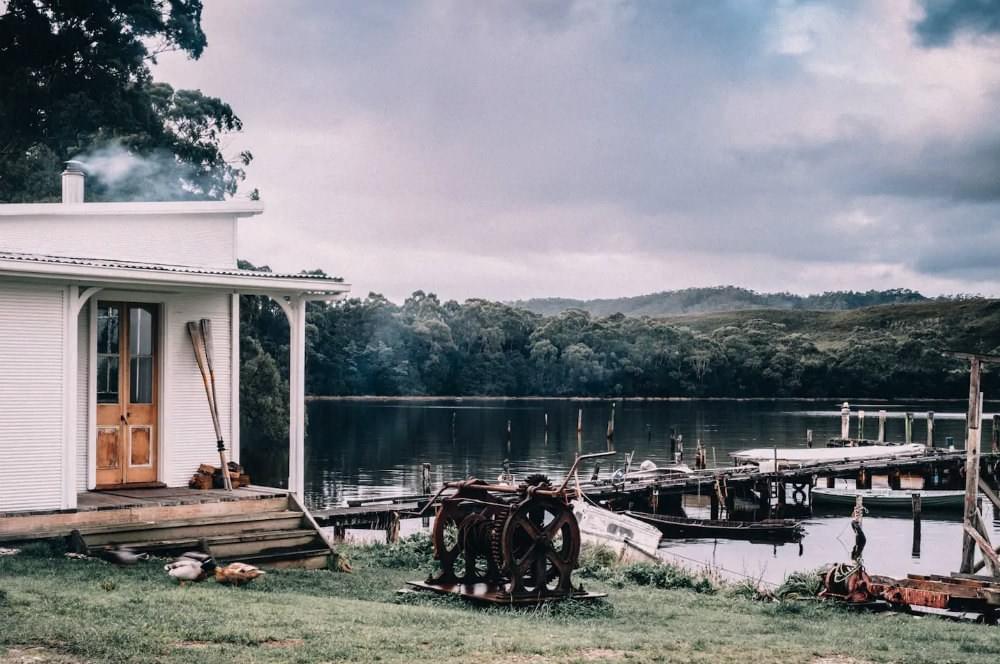
- Owner: Sarah Andrews
- Location: Strahan, TAS
- Nearest city or regional hub: Burnie (179km)
- Weekday rates: $400
- Weekend rates: $450
- Occupancy rate: 100%
Compare Captain's Rest to the average Airbnb in Strahan, TAS. See below how they perform in comparison to the rest of the city:
- No. of active rentals: 67
- Average daily rate: $190
- Occupancy rate: 74%
- Average monthly revenue: $3,750
This first Airbnb is pretty special. Located in Strahan, Tasmania, Captain's Rest is a home that evokes feelings of old world mystique. As you may have guessed, there’s a seafaring theme throughout, but not in a superficial way. It's less decor, and more of a scene or setting that actually makes you feel like you’ve stepped into a page of Moby Dick.
It looks functional and rustic, a place where you could actually picture a 1800's captain taking their leave. Setting the scene, there's a rusty boat wrench on the front lawn, oil painted ships on the walls, Victorian antiques collected from near and far, delicately dried botanicals, and oh who could forget the wharf that reaches across the water to the property's rear?
Owner Sarah Andrews has a background in design and marketing, but to begin with, she actually didn't launch Captain's Rest as an Airbnb. "I renovated the place, really, for me in mind. I didn't have any plans to share it - I kind of needed a space that was mine and I didn't have any big things in mind."
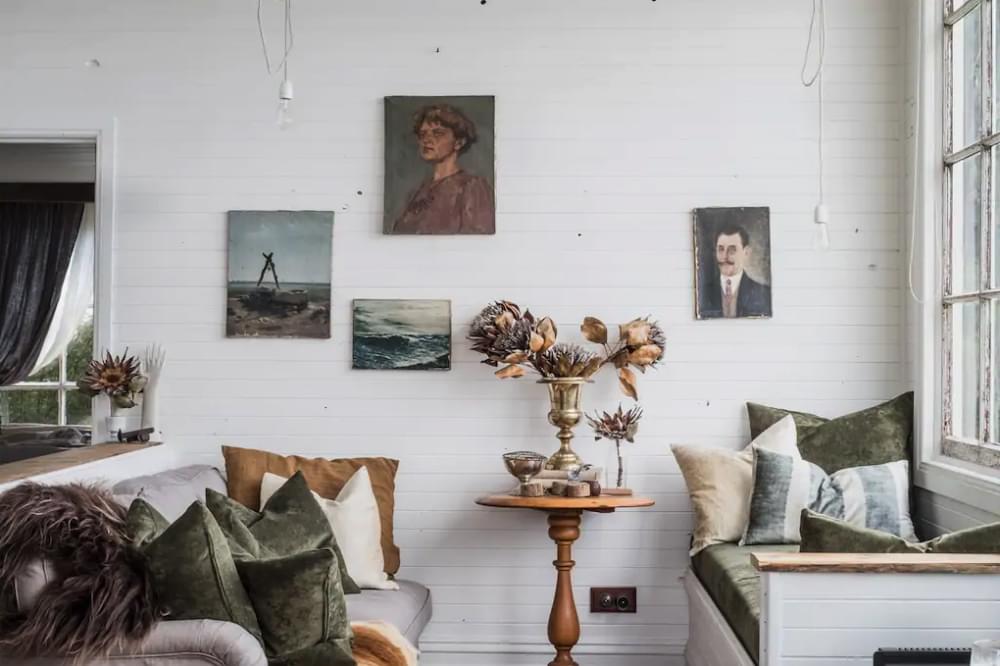
But that all changed after a divorce left her in need of an income. She listed the property on Airbnb, and well, the rest is history: "So I started sharing the place and some of my story and I found that it kind of exploded and connected with so many people really quickly, which was great!"
Sarah’s new Airbnb became a success story, and before long she was receiving emails for advice. Sarah started with some consulting work, which led to her opening her own workshop, The Airbnb Masterclass.
Sarah says that although in the beginning it was tough, it was worth working through the learning curve, "Now that I've sort of streamlined things, I probably spend 10 minutes a week managing the place in total. It pretty much manages itself now."
Sarah is obviously quite versed in creating a successful Airbnb venture - you may even say she makes an art of it. So what are Sarah's top tips for new Airbnb hosts?
"Create a scene or different experience that'll put people in another world than the one they're living... It's about giving people an experience that they don't get to have in their day-to-day lives."
Sarah stresses that you need to develop a truly unique atmosphere, "Create a scene or different experience that'll put people in another world than the one they're living. So simple things like, styling the scene to the area or buying a property that's unique. It's about giving people an experience that they don't get to have in their day-to-day lives."
She also says that photos count, but it's imperative that you get the right snaps. "Get really good photos and employ an editorial, interior photographer rather than a real estate photographer. People want to see themselves in the space and in the story - they don't want to buy the property."
1880's Church
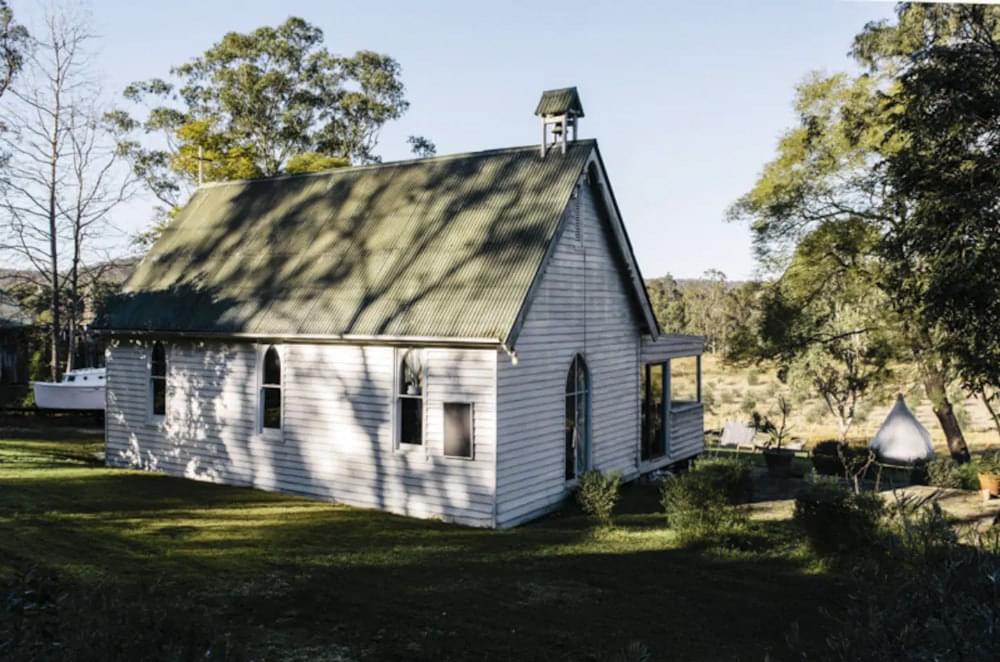
- Owner: Tessa Faucheur
- Location: Lower Portland/Hawkesbury, NSW
- Nearest city or regional hub: Sydney (86km)
- Average daily rate: $275
Compare the 1880's Church to the average Airbnb in the Hawkesbury area of NSW:
- Average daily rate: $373
- Occupancy rate: 32%
- Average monthly revenue: $3,550
- Annual rental growth: 57%
Nestled next to the Colo River in New South Wales' Hawkesbury Area, this heritage listed Church was built in the 1880s, however, it has recently been renovated as a family weekender. Despite the modern update, the building still holds all of its original charm.
The church now sports an open plan kitchen and dining area, a space where church attendees sat in times past. The original pews are still used for seats, which is a bit of a theme throughout. It's a contemporary space offering modern fittings, but small queues still quietly whisper the building's history.
It's a family sized space, however, current owner Tessa Faucheur says that it has a particular draw for creative types like writers and photographers. It's definitely the kind of place where you could picture yourself gazing out of the large windows, waiting for inspiration to strike.
Tessa purchased the property from the previous owners in 2017, who happened to be good friends. "We fell in love with the Church the first time we visited our friends for lunch! So when they decided to sell and move back to France, we had to jump at the opportunity and make it happen, it always felt like it was meant to be!"
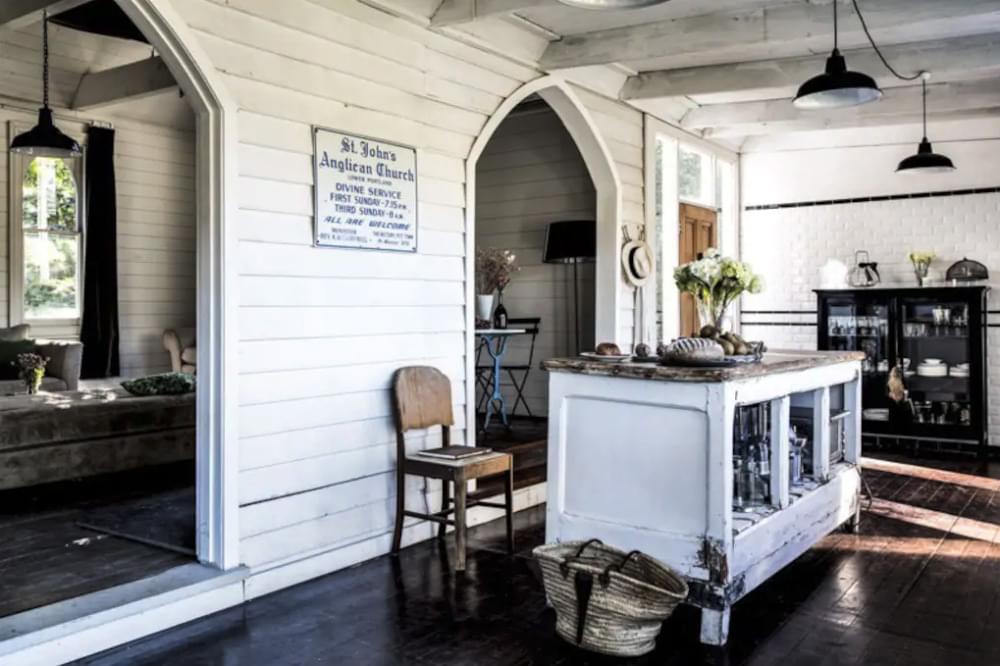
Tessa knew that the church was on the right track. It already had existing bookings, but even still, she had to adapt to the nature of the new venture. She stresses the importance of making guests feel at home and puts part of the business' success down to her relationship with guests.
"It's important for me to engage as much as possible with our guests prior to their visit and try to understand what it is that they're exactly after during their stay. This helps us to accommodate and guide them so they can make the most of their getaway in the time they've chosen to stay. It's also about being available and flexible for them if they need anything such as last minute tips!"
When it comes to forming this relationship, she says that "communication is key" to meeting guest's expectations. Tessa manages the bookings herself, however, the building has a self check-in service.
At the current time, she performs most of the cleaning and maintenance, but during the busier months she employs an extra set of hands from local cleaners.
"When it comes to the success of the 1880s Church, Tessa puts it down to a uniqueness of experience, as well as a comfortable and well-designed interior."
When it comes to the success of the 1880s Church, Tessa puts it down to a uniqueness of experience, as well as a comfortable and well-designed interior.
"Some of our guests have described it as: "a hidden gem", "a little treasure", "a divine space".
I believe the space is so inspiring, it offers an original experience for our guests and a sense of tranquility that many of us crave. A stunning backdrop everywhere you look, beautifully decorated; just everything you need for a comfortable stay.”
JR's Eco-hut

- Owned by: Kimo Estate
- Location: Nangus, NSW
- Nearest city or regional hub: Wagga Wagga (59km)
- Daily rate: $350
- Occupancy rate: 95%
Compare JR's Eco-hut to the average Airbnb in the Gundagai Region in NSW. See below how they perform in contrast to the rest of the region
- No. of active rentals: 31
- Average daily rate: $187
- Occupancy rate: 43%
- Average monthly revenue: $1,770
Described as a "glamping experience", JR’s Eco-hut is set high upon a hill in the Kimo Valley and boasts complete panoramic views of endlessly rolling hills. The hut is cleverly set up to exist completely off the grid, making use of solar power to provide light and water.
Oh, and the shower serves as a viewpoint from which you can gaze upon kilometres of postcard-perfect farmland (while washing your hair).
JR's Eco-hut is situated on the Kimo Estate, a family owned 7000 acre farm. It's a place with a rich history that echoes across the landscape. One of the oldest working farms in the region, the word 'Kimo' is the Indigenous name for mountain and refers to the large hills of the Kimo Range.
The family originally owned two cottages on the land, but they didn't quite know what to do with them. Three years ago they settled on building a unique 'A-frame' hut design which gave guests the best possible viewing experience of the surroundings.
The structured make use of local timber, steel and galvanised iron, and although the architecture is modern and striking, it also seems to gently compliment the natural surroundings.
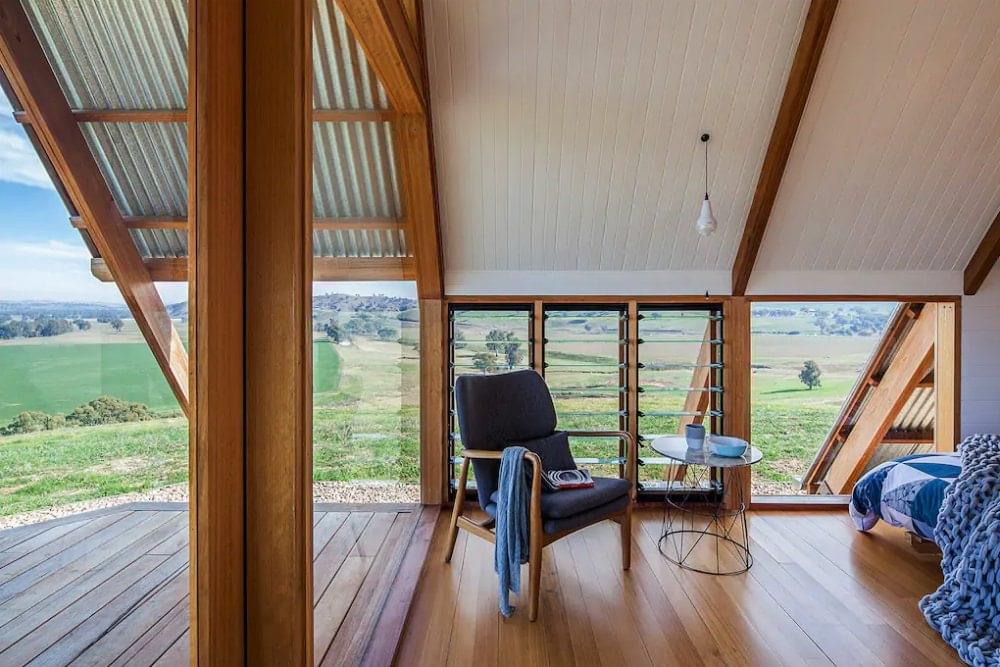
In the beginning the family only had the two original huts, and found the learning curve to be challenging as they found themselves doing most of the work.
"There was a period of time when we only had a couple of huts and it was pretty difficult because we didn't have any scale to what we were doing. It was just us managing everything."
The hard work soon paid off however, and before long the Eco-hut became a huge hit. "It's taken us by surprise! We just thought, if the weekends were busy, we might pick up a bit here and there midweek and it would be worth doing, but it's certainly exceeded our expectations. We're running at about a 95% occupancy rate - it's off the charts. We've got something like 2 nights spare for the next 3 months."
"My advice is to take it seriously and do it properly. Don't skimp out on things like linen and any personal touches. If you're gonna do it, do it properly."
The family even stated that as the business grew, it actually became more manageable. "As it got bigger, it got easier because there was some sort of scale going on and we could take on board cleaners and accommodation managers to run the whole show for us."
So what tips can the Kimo estate give to new Airbnb hosts? Again, it's put down to a uniqueness of experience, furnishings and a personal touch.
"I just think it's really unique. There's nothing like it. The Eco-hut is out in the open and looks over the gum trees on the river flats below, where you can see cockatoos nesting in the lagoon just down below where the Eco-hut sits. So really, I think it's the experience [that has made the Eco-hut so successful] - it's about where it is and what it is."
"My advice is to take it seriously and do it properly. Don't skimp out on things like linen and any personal touches. If you're gonna do it, do it properly.”
Key takeaways
1. Focus on creating an experience that's different to the kind of environments people usually live in - this is the difference between any other Airbnb and a top-rated listing.
2. Make sure your property is spick-and-span; keep personal memorabilia to a minimum!
3. Really focus on your guests' experience - that means being available when they need you and ensuring they have necessities like a supply of plush towels, beautiful soaps, a kettle and some tea and coffee.
4. Hire a professional interiors & lifestyle photographer to take photos for your listing.
5. Don't skimp on the kinds of items you choose to furnish your property with - that means buying quality linens and really thinking about the design of your space.
6. Focus on creating an interior that matches the property's environment and surroundings


